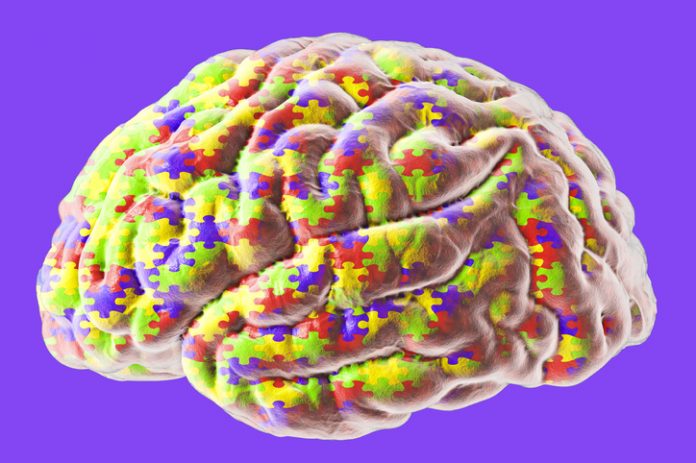
A tiny missing piece of the protein CPEB4, which moves around the cell and helps regulate gene expression, can impact neuronal activity and results in symptoms of autism spectrum disorder.
This research, co-led by Raúl Méndez, PhD, and Xavier Salvatella, PhD, at the Institute for Research in Biomedicine in Barcelona, helps explain why changes in the CPEB4 protein have an impact on the neurological system.
As reported in their paper in Nature, the current study shows that the RNA binding protein CBEP4 normally has the ability to condensate into small droplets while not needed. These silenced droplets are then able to disassemble and activate at need.
When a small (24 nucleotide) coding part of CBEP4 called a microexon is not included in the protein it becomes difficult for it to move from the silenced state in the condensate to becoming an active protein and aggregates of CBEP4 can form. This aggregation and silencing can lead to negative neurological symptoms such as those seen in people with autism spectrum disorder.
“This study provides new insights into how small modifications in proteins that regulate gene expression can have a significant impact on neuronal development, opening new avenues to explore future therapies,” explained Méndez in a press statement.
The same team previously discovered that CBEP4 played a role in autism in 2018. In this earlier study, the researchers showed that many people with autism spectrum disorder lacked a tiny part of the CBEP4 protein.
The current study sheds light on how proteins like CBEP4 regulate the expression of other genes and the proteins they encode. There are other proteins in the same family that have differing functions, but all participate in mRNA transport and localization, and are important for regulating cell division, neural development, learning and memory, according to the researchers.
The microexon missing in CBEP4 in people with autism helps the protein to switch on and off as needed. If CBEP4 is not able to come out of the silenced state, then it can affect how proteins in the brain are translated and impact neurological development in children with the condition.
The researchers believe they may be able to find a method to reintroduce the sequence from the microexon to help restore its proper function in those affected. “Although we’re still in exploratory stages, this discovery is promising and points to a potential therapeutic approach that could restore CPEB4 function,” says Méndez.









![Best Weight Loss Supplements [2022-23] New Reports!](https://technologytangle.com/wp-content/uploads/2022/12/p1-1170962-1670840878.png)




